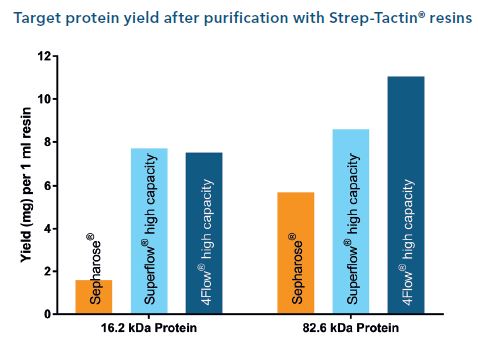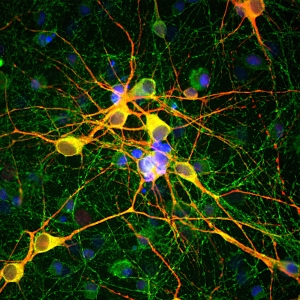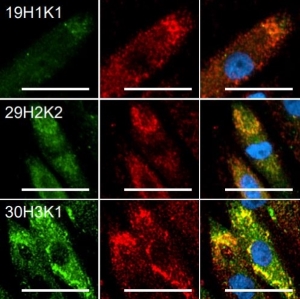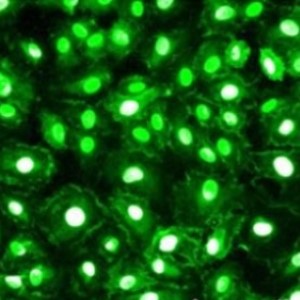The latest news from Neuromics, customers, collaborators, and friends. Here we will post publications, data, new reagents, and methods.
For additional information on Neuroscience updates check out our Neuroscience Blog.
Neuromics FBS + Health Research
Scientists from Augusta University used our Premium Imported Fetal Bovine Serum (FBS) (cat. FBS002) to culture RAW264.7 cells, a mouse macrophage line, in preliminary research released this month. They were looking at ways to deliver nutraceuticals in oral capsules or beverages that allow the body to better process the nutrients.
Image: RAW264.7 cells culture using Neuromics Fetal Bovine Serum (FBS).
The study presents the Facilitated Self-Assembling Technology (FAST) platform, a clean-label method for generating bioavailable nutraceutical nanoparticles. Many other platforms use harmful compounds or are not able to keep nutraceutical compounds stable.

More Fascinating Research with GFP-Expressing Cells
Over the past few years, researchers from Dartmouth have utilized our GFP-expressing U87 MG cells (cat. TR01-GFP) in surgical imaging research. They have been using the cells to evaluate various contrast agents for fluorescent-guided surgery by implanting our cells in mouse models. Last week, they published another study with fascinating results.
In their initial paper, released last year, the researchers identified TMR-PEG1k as the preferred contrast agent when compared with others. Then, earlier this year, the same group released a study highlighting the need for standardized methods to study contrast agents.
Image: Neuromics GFP Expressing U87 MG Cells were incubated with two potential contrast agents in surgical research.
In this week’s research, the investigators developed a near-infrared version of TMR-PEG1k to address some of the agent's shortcomings. Being in the visible regime, TMR-PEG1k is excellent for superficial tissue, but doesn’t allow for subsurface penetration, unlike a near-infrared agent. Therefore, the researchers developed a cyanine 7 version of the agent as an alternative.
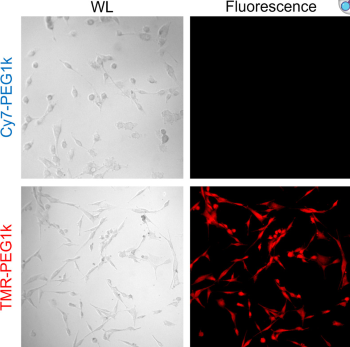
Another Opportunity to Save on FBS
Neuromics is excited to announce another year-end promotion. This time, on our most trusted cell culture essential: Premium Imported Fetal Bovine Serum (FBS) products. These FBS products are relied on by researchers across academic, biotech, and pharmaceutical labs for their consistency, clarity, and performance.
Through the end of the year, you can take advantage of the following pricing:
- 10% off all purchases of FBS002 and FBS002-HI (through our website)
- 15% off purchases of 10 or more bottles of FBS002 and FBS002-HI (contact us for a quote)
Both the standard (FBS002) and heat-inactivated (FBS002-HI) versions are included in this promotion, giving you flexibility depending on your application needs.
Whether you’re stocking up for 2026 projects or scaling up ongoing studies, this is the perfect opportunity to save on a core reagent your lab relies on.
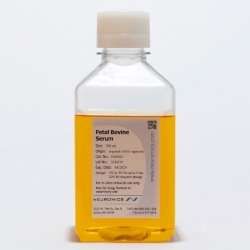
Neuromics Expands Human iPSC Portfolio
As part of our commitment to supporting innovative research, Neuromics continually seeks to introduce new human cell types that meet the needs of researchers. Earlier this month, we introduced several new cell types for studying diabetes and obesity. Now, we've turned our attention back to our selection of human iPSC-related cells, with the addition of three cell types. As a reminder, we offer a wide range of iPSC-derived neural cell types (check them out).
iPSC-derived models are transforming neuroscience research - especially for diseases like ALS, Parkinson’s, and Alzheimer’s. Models from diseased donors open the door for new assays and drug discovery approaches.
Image: Neuromics Human iPSC - Sensory Neurons (cat. IPS006) in culture.
Here are the new cell types:
- Human iPSC (cat. IPS013): a versatile cell line for custom differentiation or disease modeling.
- Human iPSC - Motor Neurons (ALS Patient, Sporadic) (cat. IPS014): derived from a patient with sporadic ALS, providing a physiologically relevant model for studying disease mechanisms
- Human iPSC - Motor Neurons (TDP-43 M337V, Homozygous) (cat. IPS015): a genetic model capturing a well-characterized ALS-linked mutation in TARDBP.
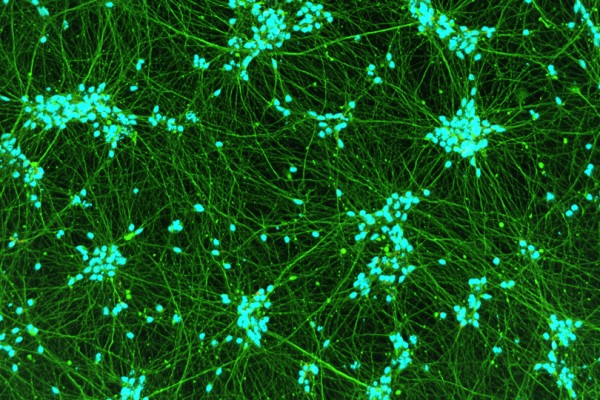
Save 5% on IBA's Premier Protein Purification Resin
As IBA Lifesciences’ U.S. distributor, Neuromics is proud to provide our customers with the most advanced tools for protein purification. Through the end of the year, you can now save 5% on IBA’s premier resin - Strep-Tactin® 4Flow® High Capacity - a trusted choice for achieving high yield and purity.
Strep-Tactin® 4Flow® High Capacity represents the latest generation of IBA’s purification technology. The resin features a low-concentration (4%) and pressure-stable agarose coupled with a high Strep-Tactin® density, resulting in:
- Exceptional protein binding capacity
- Compatibility with FPLC workstations
- High yields across all protein classes, including large and complex proteins
- Superior stability supporting at least 50 regeneration cycles
Image: The increased density of Strep-Tactin® molecules immobilized on Strep-Tactin® 4Flow® high capacity translates to an overall high binding capacity compared to Strep-Tactin® Sepharose® and Strep Tactin® Superflow® high capacity.
